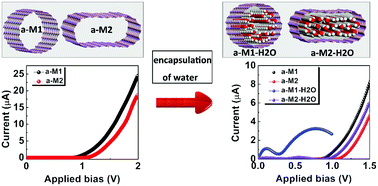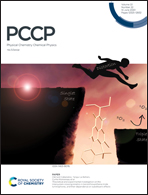BAs nanotubes with non-circular cross section shapes for gas sensors†
Abstract
The chirality-dependent property of CNTs hinders their application in next-generation electronic devices. There is thereby an urgent need to explore new 1D nanotubes with stable and controllable electronic properties. Here, we investigate the charge transport properties of several BAs nanotubes (BAsNTs) with different shapes by using first-principles density functional theory (DFT) and non-equilibrium Green's function (NEGF) methods. It is found that these BAs nanotubes are all semiconductors regardless of chirality and cross section shape, and their band gaps are very close (∼1 eV), which could overcome the chirality-dependent property shortcoming of CNTs and thus make them potential candidates for application in the field of electronic devices. In addition, we demonstrate that the encapsulation of H2O, CO2 and SO2 molecules has different effects on the BAsNTs with different cross section shapes. Particularly, when inserting H2O into the circular BAsNT, the negative differential resistance (NDR) phenomenon and a metal–semiconductor transition are observed. This novel characteristic makes BAsNTs potential candidates for application in gas sensors. The discovery may provide new opportunities for the design of next-generation BAsNT-based electronic devices and gas sensors.



 Please wait while we load your content...
Please wait while we load your content...